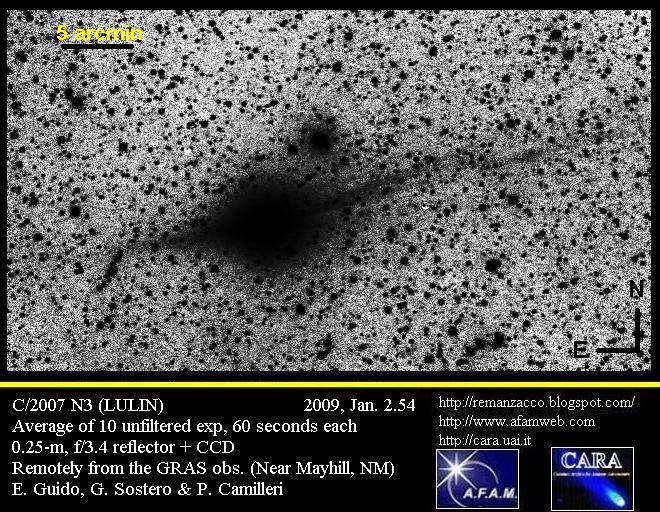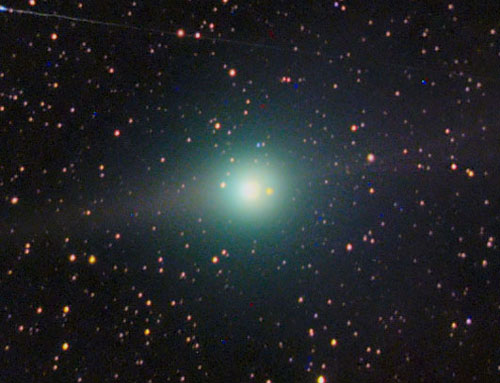
Late next month Earth will receive a new celestial visitor named Lulin - or Comet C/2007 N3 - which astronomers say may have never visited this corner of the solar system before and should be visible to the naked eye.
Comets are icy clumps of dust and small rocks left over from the beginnings of the solar system. As they near the Sun some of the outer layer of ice is vaporised, releasing gas and solid debris that fans out into a tail pointing directly away from the Sun.
Astronomer and author Gary Kronk, based in St Jacob, Illinois, estimates that by 24 February, Lulin's gas tail should appear as long as around eight times the diameter of a full Moon. At that time it will be a mere 38 million miles from Earth, almost as close as Mars reaches to our planet.
First time visitor?
By tracking Lulin since its discovery in the summer of 2007, astronomers have calculated that it had already been on the move for 10 million years before it arrived in the solar system. They say that either Lulin was once here 10 million years ago, or it was somehow knocked out of the Oort cloud of billions of comets that surrounds the solar system and has never entered the inner solar system before.
"If this is its first approach towards the Sun, we don't know how it will respond. Some comets become brighter than expected and some don't," explains Kronk.
Lulin's brightness depends on how much the Sun can melt the comet's hard icy coat to release a visible tail of debris.
A comet on its first approach to the Sun can resist its heat, preventing a bright tail from appearing. But Kronk thinks Lulin will get close enough to our star to make that unlikely. He is confident that the comet will be visible with the naked eye, registering magnitude 5 on the standard brightness scale, where 6 is the faintest.
"This is what makes comets so amazing," he told New Scientist. "Every comet has its own personality. No-one knows exactly what the comet is going to do." Lulin will be moving fast enough to appear to be creeping across the background of more distant stars, he adds.
Twin-tailed comet
Lulin could also be one of only a few comets that appears to have two rather than one tail. The extra "antitail" becomes visible because Earth happens to be orbiting the Sun on the same plane as Lulin.
When solar wind blows gas and dust particles away from a comet, larger debris moves more slowly and lags behind the moving comet. The fanned tail appears to extend from both sides of the comet's body when viewed from the edge on.
The last comet with a visible antitail was Arend-Roland in 1957, says Kronk. "Lulin could give the best chance in my lifetime to see something like that," he adds.
Professional astronomers are also looking forward to Lulin's visit. Michael Mumma, director of the Goddard Center for Astrobiology, Maryland, and colleagues have scheduled three months of observations, starting next week, at the Keck telescopes on the summit of the Mauna Kea volcano in Hawaii.
By analysing the light from Lulin they hope to detect the hydrogen isotope deuterium, to strengthen their hypothesis that icy comets delivered some of the Earth's water during the first billion years after its formation.




Reader Comments
to our Newsletter